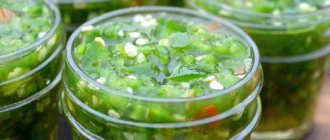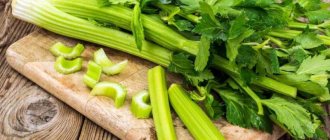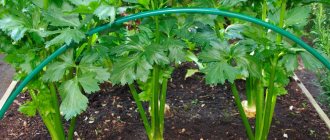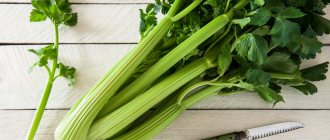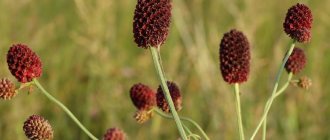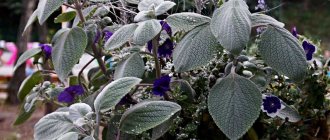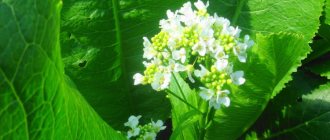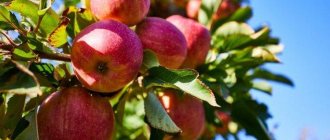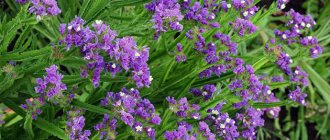Popular varieties of different types of celery with descriptions and photos
Celery has been used as food by humans since ancient times.
The plant has a spicy aroma and unusual taste, and thanks to its beneficial properties, it has won an honorable place in the diet of those who care about their health.
Modern chefs also often use the root vegetable to prepare various dishes.
The vegetable is eaten raw, frozen, pickled and dried. The dried seeds of the plant are used to prepare celery salt, which allows you to emphasize the piquantness of dishes. Celery is considered no less popular among herbalists, who use it for the prevention and treatment of a variety of diseases. The root vegetable is also used by cosmetologists and pharmacists in their practice.
There are three types of celery - root, petiole and leaf.
Description and photos of popular varieties of root celery
Let's look at the best varieties of root celery that you can buy today on the domestic seed market.
"Giant of Prague"
The variety is characterized by simplicity and undemanding cultivation
. From the moment the grains are planted in the ground until the harvest, no more than 120 days pass. Plants of the variety form giant root crops with a turnip-like shape and delicate light flesh. The root gives off a fairly strong aroma and has bright taste characteristics.
"Diamond"
The life cycle of plants of this variety does not exceed 150 days.
The culture produces smooth, round root vegetables, the average weight of which reaches 200 g. The main feature of the variety is that even with long-term storage and heat treatment, the root pulp retains its white color. The variety is characterized by increased leaf formation and resistance to bolting.
“Cascade”
Root crops of this variety are ready for harvest 150 days after emergence.
A ripe vegetable has a round shape, white flesh and medium size. The variety is characterized by low lateral roots and resistance to bolting.
"Apple"
"Root Gribovsky"
The life cycle of plants of this variety ranges from 120 to 150 days.
The root vegetables have light flesh with a small amount of yellow spots, their weight can be from 65 to 135 g. The variety has an excellent flavor and aromatic palette, which allows it to be eaten both fresh and dried.
"Albin"
No more than 120 days pass from the moment of germination to the full maturity of the fruit.
The root vegetables of this variety are round in shape and can reach up to 12 cm in diameter. In the upper part of the vegetable, its skin has a slightly greenish tint. The root system is well developed only in the lower part of the root crop, which does not protrude above the ground. The vegetable has white pulp that is resistant to the formation of voids.
"Strongman"
By the time of harvesting, the weight of the root crop can reach 400 g. The fruit has a round shape, white flesh with a slight yellowish tint, a bright aroma, and containing an impressive amount of mineral salts. The leaves of the crop form a semi-raised rosette. Lateral roots are well developed only in the lower part of the root crop.
"Anita"
The best varieties of petiole celery
Varieties of petiole celery are divided into green, requiring bleaching, self-bleaching and intermediate.
Petiole celery is a unique plant that has firmly taken a leading position among vegetables in terms of the content of minerals and vitamins. In addition, petiole celery is the most delicious representative of its species; its varieties can please even the most demanding gourmets with a rich flavor and aromatic palette.
However, their main disadvantage in comparison with traditional varieties is low frost resistance, as well as a shorter storage period. The best varieties of stalk celery are listed below.
Self-bleaching varieties
"Gold"
The life cycle of the plant ranges from 150 to 160 days.
The medium-long, slightly ribbed petioles of the plant have a slightly curved shape and a light green color. On average, the weight of a rosette variety can reach up to 830 g. When creating comfortable conditions, up to 5 kg of crop can be harvested from one square meter.
"Malachite"
From germination to harvest, it takes 80 to 90 days.
The culture forms thick, light green, fleshy, slightly curved petioles with weak ribbing, reaching a length of up to 35 cm. If all cultivation conditions are met, the weight of the rosette can reach 1.2 kg.
"Tango"
Celery varieties that need bleaching
"Atlant"
From the beginning of germination to harvest, an average of 150 to 170 days pass.
On average, the petioles of the plant reach a length of about 45 cm, and the weight of the rosette can range from 150 to 165 kg. By creating comfortable conditions for the crop, you will be able to collect at least 3 kg of crop per square meter.
Read also: Tomato “Troika”, “Siberian Troika” or “Russian Troika”: photo, description of the variety and characteristics
“Male Valor”
A very promising variety that is ready for harvest 150 days after germination.
The culture has thick, large, light green petioles, with a slightly curved shape and slight ribbing. On average, the length of the petioles can vary from 45 to 55 cm. If all agrotechnical standards are observed, the weight of the rosette can reach 600 g.
"Pascal"
When growing this variety, be prepared for the fact that on average no more than 100 days pass from germination to harvest.
The crop produces slightly curved dark green petioles, 25 to 30 cm long. The rosette weight of the variety reaches 450 g. The petioles of the variety have a pleasant aroma and are very juicy in taste.
The culture is highly cold-resistant.
Common varieties of leaf celery
elder has no roots and no fleshy petioles.
But this is the earliest among all types of celery, the greens of which are used for making salads, seasonings and even baking. Early celery is considered especially useful; its leaves contain an impressive amount of vitamins and microelements. The plant will relieve vitamin deficiency, anemia, nervous breakdowns and prevent the development of osteoporosis. The most popular varieties of leaf celery can be easily found on the shelves of any seed store.
"Cheerfulness"
"Zakhar"
A mid-late productive variety, the leaves of which, subject to growing conditions, can reach a height of 30 to 35 cm.
The leaves of the plant have high organoleptic characteristics. The diameter of the leaf rosette of the crop reaches a maximum of 26 cm. The variety has delicate, hairless leaves and petioles of medium length. From 80 to 120 leaves can be formed on one crop.
"Sail"
A high-yielding variety of leaf celery that forms a semi-raised rosette.
The crop has a short ripening period: no more than 90 days pass from germination to harvest. The variety has excellent taste and aroma characteristics and is absolutely unpretentious in cultivation.
"Samurai"
The benefits of celery are endless
. The plant is used in cooking, folk medicine, pharmacology and cosmetology, and therefore a bush grown on your own windowsill will become a real source of health and longevity in your apartment.
Diseases, pests and their control
Celery is often attacked by pathogenic fungi and pests. Often the cause is errors in care, primarily, excessive thickening of plantings, too much watering, irregular weeding, too frequent application of fertilizers or exceeding the recommended dose.
Diseases typical for the culture:
- Rust. The underside of the leaves, petioles, and lower part of the stem are covered with small “hairy” spots of bright saffron color. Gradually they grow and “densify”, changing color to copper or rusty. The affected parts of the plant turn yellow and dry out. For prevention, celery is sprayed with a solution of Fitosporin-M, Baktofit about once a month. Having discovered the first symptoms, use any fungicides - Topaz, HOM, Horus, Kuprozan. At the early stage of disease development, 2–3 treatments with an interval of 5–7 days are sufficient. The use of all chemicals is stopped 20–25 days before harvest.
- Septoria (white spot). Most often it develops towards the end of summer. Leaves and petioles are covered with small round “pressed” spots. They are yellowish on the leaves and dark brown on the stems. At the first signs, Topsin-M or Fundazol is used. Treatment is carried out twice with an interval of 10–12 days.
- Cercospora blight. The spread of the pathogenic fungus is facilitated by sudden changes in temperature, damp and cold weather. The leaves are covered with numerous rounded light gray spots with a darker border. Gradually they become covered with an inky purple coating. For treatment, the same drugs are used as to combat septoria.
- Downy mildew (peronosporosis). A whitish coating appears on the leaves and stems, similar to spilled flour. Gradually it thickens, turning into something similar to felt. For prevention, plants are dusted with colloidal sulfur approximately once a month, and sprayed weekly with an infusion of soda ash, horsetail or thistle. Diseased celery is treated with a 2% solution of Bordeaux mixture, Oksikhom, Ridomil-Gold. Usually 2-3 procedures with an interval of 8-10 days are sufficient.
- Cucumber mosaic. Light areas of light green or yellowish color appear on the leaves. They may take the form of spots, stripes or rings. There is currently no cure for the virus. Affected plants are removed from the garden bed and burned. The soil is disinfected by spilling it with a 2% solution of copper sulfate or a bright pink solution of potassium permanganate. The virus is spread by spider mites and aphids, so special attention must be paid to combating them.
- White rot. A white coating, similar to cotton wool, with small black inclusions appears on celery. Then the bases of the leaves and the top of the tuber soften, acquiring a dark brown tint. They are slimy to the touch and have an unpleasant putrid odor. Excess nitrogen in the soil contributes to the development of the disease. For prevention, celery is dusted weekly with crushed chalk and sifted wood ash. Having discovered a disease, cut off even the least affected parts of the plant. Then it is sprayed three times with an interval of 5–8 days with a solution of any fungicide (Topaz, Abiga-Pik, Skor). Irrigation water can be replaced with a pale pink solution of potassium permanganate for 2–3 weeks.
Photo gallery: how celery diseases manifest themselves
To combat rust, any fungicides are used. Septoria on celery appears towards the end of summer.
The development of the fungus that causes cercospora blight is facilitated by high air humidity and cool weather.
It seems that downy mildew is a harmless coating that can be easily wiped off, but this is by no means the case.
It is impossible to cure cucumber mosaic with modern means.
White rot can develop both in the garden and during storage of celery
The most dangerous pests for celery are:
- Celery fly. Adults lay eggs in leaf tissue. The emerging larvae eat away the petioles from the inside, leaving longitudinal passages in them. The pulp acquires a bitter taste, and the yield decreases sharply. To scare away adult individuals, a bed of celery is surrounded by plantings of onions or garlic. Once every 2-3 weeks, the plants are sprayed with an infusion of their arrows or gruel.
- Carrot fly. Lays eggs in the soil. The larvae gnaw through celery roots, eat away the inside of tubers and petioles, and damage leaves. To scare them away, the bed is sprinkled with a mixture of fine sand, mustard powder and tobacco dust every 7-10 days.
- Carrot psyllid. Winters on coniferous trees. In mid-summer it flies to celery and feeds on the sap of the plant. The affected leaves are deformed, the petioles are shortened and bent. Control measures are the same as for carrot flies.
- Bean aphid. Black insects clinging to the underside of leaves, petioles and stems. They feed on plant sap; the affected parts become discolored, deformed and dry out. In addition, aphids are carriers of many dangerous fungi, bacteria, and viruses. It is effectively repelled by any infusions with a pungent odor. They are prepared using onion or garlic arrows, lemon peel, wormwood, tomato tops, hot peppers, and so on as raw materials. For prevention, celery is sprayed once a week, to combat aphids - 3-4 times a day. If folk remedies do not help, insecticides are used - Inta-Vir, Actellik, Admiral, Mospilan, Iskra-Bio.
Photo gallery: what celery pests look like
The main damage to plantings is caused by celery fly larvae, but this does not mean that adult individuals do not need to be fought
The carrot fly can deprive a gardener of a significant portion of his celery harvest.
Most often, celery growing in garden plots located near coniferous forests suffers from carrot psyllid.
Aphids are one of the most “omnivorous” garden pests; they also do not bypass celery.
Celery - the secrets of a rich harvest
The seeds are placed in boxes filled with fertile soil and sprinkled with a layer of humus. After the appearance of the second true leaf, the plants are planted in separate cups. A week before transplanting to the garden bed, the seedlings are taken out to the balcony for hardening.
In mid-May you can plant sprouts in the garden. Celery loves moist, fertile soils with neutral acidity. If the soil on your site is acidic, add lime or ash to it when digging in the fall. There is no need to add fresh manure to the soil, otherwise the root crop will begin to branch. The best option would be to plant celery in the beds where vegetables fertilized with organic matter grew last year.
When digging in spring, add a complex fertilizer with microelements to the soil. The distance between rows should be about 40 cm , and between plants - 15 cm .
Celery is very demanding of moisture and in dry times requires regular, abundant watering. During the growing season, it is advisable to feed the plants 2-3 times with slurry with complex fertilizers dissolved in it.
Stems of petiole celery will become more tender and less bitter if they are bleached , that is, their lower part is wrapped in paper or straw.
You can cover the petioles with soil, but in this case the taste will not be as delicate. For tuberous varieties, remove the lower leaves; the root crop will develop better.
How to properly remove and store celery
In summer, most of the leaf and petiole celery will be eaten, the remaining plants are removed when they reach a height of 30 cm. The tubers are dug up at the end of September . Several root vegetables can be left in the ground, covered with straw; in the spring they will delight you with early greenery. You can also plant the tubers in flower pots and place them on the windowsill; in winter they will supply the whole family with vitamin leaves.
For the remaining root vegetables, you need to cut off the leaves and lower roots, put them in boxes, sprinkle them with sand and store them in a cool room, the temperature in which should be from 0 to +1° , and the humidity should be at least 90% . Leaves and petioles are placed in the refrigerator in sealed plastic bags. Tubers can be stored until spring, and above-ground parts for no more than a month.
Read also: Potatoes “Skarb”: characteristics, agricultural cultivation techniques
Norms and rules of consumption
The norm for celery consumption is 300 g per day. The product can be eaten raw, boiled, baked, fried, pickled. Petioles and leaves are added to fresh vegetable and fruit salads. The root goes well with carrots, onions, herbs, and apples.
Before preparing the root, the thin skin is cut off, the pulp is cut into strips or grated. The juice from the root and petioles is drunk freshly prepared.
Cooking recipes
The uses of celery in cooking are varied. Fresh herbs and petioles have a pleasant, refreshing taste that will enrich any dish of vegetables and meat. Dried roots and herbs are added to soups, borscht, broths, sauces, and stews.
Try making an interesting appetizer using squid, ginger root and celery. To do this, prepare the ingredients:
- squid - 1 kg;
- petiole celery - 200 g;
- ginger root - 10 g;
- soy sauce - 3 tbsp. l.;
- wine vinegar - 2 tbsp. l.;
- vodka - 2 tbsp. l.;
- onion - 1 pc.;
- allspice ground pepper - to taste;
- vegetable oil - 2 tbsp. l.
Preparation:
- Peel the squid from the film, remove the chitinous plate and cut into strips. Immerse in boiling water for 1-2 minutes and transfer to a bowl of cold water.
- Cut the petioles into pieces and place in boiling water for 1 minute.
- Peel the onion and cut into small cubes.
- Grate the ginger on a fine grater.
- Heat oil in a frying pan and fry onion and ginger until translucent.
- Add squid and celery to the pan and cook for 2 minutes, stirring.
- Pour in soy sauce, vinegar, vodka, season with ground pepper, stir. Simmer for 2 minutes and serve.
The root is often used in folk medicine. Fresh juice is used to treat gastritis, stomach ulcers, and liver disorders.
The leaf part improves the condition of gout and rheumatism. The leaves and crushed root are poured with boiling water and left for 3 hours in a thermos. Rub the infusion on painful areas and make compresses based on it.
Tea made from dry leaves quickly removes excess fluid from the body, dissolves salt deposits, treats colds, and calms the nerves. For 0.5 liters of boiling water take 2 tbsp. l. raw materials, cook over low heat for 5-7 minutes. Drink 1-2 glasses of tea a day.
Ointment made from leaves and petioles has a healing effect. It is used to treat purulent wounds, rashes, ulcers, urticaria, lichen, and eczema. The raw materials are ground in a meat grinder and mixed with melted butter 1:1. The ointment is applied to the skin and covered with gauze. The product is stored in the refrigerator.
To get rid of allergies and insomnia, the root is grated and poured with water at room temperature (2 tbsp/200 ml). Leave for 3 hours.
To treat gastritis and stomach ulcers, use a decoction: 20 g of crushed root, pour 250 ml of boiling water, boil for 10 minutes, leave for 12 hours in a thermos. The decoction is taken 2 tbsp. l. three times a day.
Freshly squeezed juice from the root and petioles increases potency. It is taken 1-2 tsp. twice a day half an hour before meals.
Which variety do you prefer?
The variety of varieties of leaf, petiole and tuberous celery allows each summer resident to choose plants that suit him, both in taste and in the characteristics of the garden plot.
Celery root:
- Gribovsky is a medium-late variety, the growing season is 180–190 days. A root vegetable weighing about 150 g with a delicate taste and dense pulp.
- Diamant is a mid-early variety with a period from germination to harvesting of approximately 150 days. Resistant to flowering. The pulp remains white after cooking.
- Maxim is a late variety, the growing season is more than 200 days. Root vegetables weighing up to 500 g can be stored well without losing their taste.
Petiole celery:
- Golden is a mid-early variety, the plant is tall, the petioles are juicy and do not require bleaching.
- Tango is a mid-season variety, the period before the onset of technical ripeness is about 160 days. Bluish-green petiole without fibers. Very productive, well stored.
Leaf celery:
- Vivacity is a mid-season variety. Not afraid of drought and low temperatures. The fragrant leaves can be cut several times during the summer.
- Tender is a mid-season variety with a semi-vertical rosette and many side shoots. Suitable for growing indoors in flower pots.
- Zakhar is an early ripening variety. A tall and large rosette with leaves that grow quickly after cutting.
You can prepare many delicious and healthy dishes from celery: salads, soups, side dishes. The piquant taste of this plant allows you to reduce the amount of salt in dishes that use celery. Teach your elderly relatives to include it in the menu every day, and they will remain vigorous and healthy for many years.
Agricultural technology
How to grow celery correctly, for example in the country, so that the root is large? Caring for root celery has its own nuances :
- Watering . Celery loves moisture very much; in hot weather it requires watering at intervals of one day, with a water consumption of 20-25 l/m². You need to try not to get on the leaves, so as not to provoke rot diseases. After watering, the bed must be loosened and mulched. Watering is carried out before harvesting.
- Feeding. During the growing season, celery is fed 3-4 times.
- 7-10 days after planting the seedlings in a permanent place, the seedlings are watered with an infusion of fresh manure diluted with water in a ratio of 1 to 10, or an infusion of chicken manure diluted in a ratio of 1 to 20. 0.5 liters are used per root.
- 2-3 weeks after the first feeding, azo-, nitro- or diammophosphate is added. Mineral fertilizers can be replaced with infusions of nettle, chamomile, comfrey, and dandelion.
- In the 2nd decade of August, the bed is filled with superphosphate and potassium sulfate.
- In September, it is useful to support celery root with a solution of boric acid.
- Unwinding . Root celery is not hilled up, but, on the contrary, unhilled, freeing the tuber from the ground as it grows. In addition, in July, carefully rake the soil away from the tap root and carefully remove the lateral roots. After the cuts have dried, lightly mound the ground.
- Foliage trimming . The outer leaves of root celery are regularly cut off so that no more than 4 young leaves remain in the rosette, but all leaves cannot be removed.
- Cleaning . The tubers must be dug up before the first frost, otherwise they will not be stored. Dig out the tubers carefully, trying not to damage or scratch the skin. If the bed is well watered, this will make it easier to extract the fruit.
- Storage . Tubers are stored in boxes with sand at a temperature of 2-5 ºC.
If you feed celery with a boron solution (2 g per 10 liters of water), voids will not form in the tuber.
Read about other types and varieties of tasty and healthy celery in separate articles on our website.
In terms of the set of useful microelements, celery root is comparable to ginseng. It is not only tasty, but also healing. With its help, you can get rid of joint diseases, depression, unmotivated anxiety and irritability, normalize blood pressure, and remove toxins from the body. And growing it is not at all difficult, if you know and follow basic agricultural techniques.
Self-bleaching varieties of petiole celery
A healthy lifestyle is possible if you eat fresh greens. Celery is a storehouse of vitamins and nutrients. That is why this article presents varieties of petiole celery with photos and descriptions. Although this plant was immediately used as a medicine, gradually it began to be purchased for preparing tasty and healthy food.
Celery is a storehouse of vitamins and nutrients
The best varieties of petiole celery for Siberia
There are green and self-bleaching varieties of petiole celery. It is grown in seedlings or immediately planted with seeds in open ground. Let's consider the main self-bleaching varieties of celery intended for cultivation in Siberia. Here are the main ones:
- Malachite. On average, 85 days pass from germination to harvest. The plant has large, light green petioles. The length of celery is 35 cm. The weight of one rosette often reaches more than 1 kg.
- Gold. Slightly curved, silvery petioles are of medium length. Harvesting can be done 150 days after germination.
- Tango. An aromatic variety with impeccable taste - these are the reviews many summer residents leave about petiole self-bleaching celery. Moreover, it retains its presentation for a long time.
- Pascal. This is a fairly late ripening variety. If agrotechnical practices are followed, the gardener will be able to harvest at least 3 kg per 1 sq.m. The petioles of the plant reach a length of more than 40 cm.
Celery varieties that need bleaching
Celery is grown in seedlings or immediately planted with seeds in open ground.
Celery is a popular crop in Russia, Ukraine, and Belarus. They all have their own characteristics and advantages. But every summer resident chooses one or another type of crop to suit his taste. Pay attention to the top 4 best varieties of petiole celery with photos, namely:
- Male valor. This variety definitely needs bleaching. The plant is characterized by thick, ribbed and large petioles. The weight of the rosette is approximately 600 g. Productivity is high, up to 3.3 kg per 1 square meter.
- Crunch. Ready for harvesting 120 days after emergence. This crop is considered cold-resistant, so it is grown even in Siberia. It has a pronounced aroma and excellent taste.
- Utah. Strong dark green petioles with a purple tint that have no fibers. In the photo you can see its features in more detail. A very aromatic variety that retains its juiciness for a long time and does not lose its presentation.
- Atlant. One of the best varieties of celery that needs bleaching. Productivity is high. 160 days must pass from germination to harvesting of plants. The average weight of the socket is 350 g.
Video about varieties of petiole celery:
Varieties of petiole celery are a hot topic for millions of gardeners, including beginners, especially since planting the crop in a dacha or plot needs to be done quite early. When choosing a particular type of plant, it is worth taking into account the characteristics of the variety, the climatic conditions of the area and soil, and other important factors.
Varietal varieties
Best in yield
- Prague giant - with proper agricultural technology, large specimens weighing up to 3-3.5 kg grow.
- Diamond - with a large number of well-chosen fertilizers, root vegetables reach 3-3.5 kg.
- President - by following the planting scheme and agrotechnical practices, even with moderate fertilizing you can get 2-2.5 kg of vegetables.
- Russian size - subject to planting density, abundant fertilizing and correct soil acidity, they can reach sizes of up to 4 kg.
No lateral roots
- Diamond.
- Maksim.
- Cascade.
- Anita.
- Albin.
- Russian size.
Stem and leaf celery - the best varieties for growing
In French cuisine, different types of celery are widely used to prepare delicious dishes: purees and broths are prepared from root vegetables, stewed in cream, stem celery is fried, stuffed, added to soups and salads. This vegetable plant is not so popular among Russian housewives, and while dill is always present in any garden, celery is several times less common, although growing it is not at all difficult. At the same time, the benefits of celery cannot be overestimated.
Read also: How to plant and grow the “April” cucumber variety
Varieties of petiole or stem celery
There are not many varieties of petiole and leaf celery, but from the available assortment you can choose several varieties suitable for taste for growing in a greenhouse, in a pot on a windowsill or in open ground. If you are more interested in root vegetables, check out the popular varieties of root celery in the corresponding article on our website.
Root varieties have too long a growing season
The cultivation of petiole celery is not particularly widespread in our country, so the choice of varieties is small. The main varieties of stem celery: Utah, Malachite, Triumph, Golden, Pascal, Florida, Tango, as well as Dutch Loret, Avalon, Ducklet, Bolivar, Greenlet.
One of the popular varieties with a growing season of 80 days. The petiole celery Malachite leaves have a dark green color, and the petioles are thick, juicy and fleshy.
About 150 days pass before the onset of technical ripeness.
This mid-early variety is grown in order to obtain juicy petioles with excellent taste and not hollow inside. Another advantage of the Zolotoy variety is that it is self-bleaching. About 150 days pass before the onset of technical ripeness.
A variety of celery with petioles of intense dark green color, which reach a length of 22 cm. From the appearance of the first shoots to the onset of ripeness of the stem celery of the Pascal variety, up to 100 days pass.
Stem celery with a growing season of 130 days is classified as medium-late. Can be used for cultivation in open ground and at home. Celery grows up to 65 cm in height, the rosette is compact with juicy fleshy stems 30 cm long. The color of the petioles is emerald green.
Stem celery with a growing season of 130 days belongs to the group of medium-late
The petiole variety Tango with a long growing season (up to 180 days) is distinguished by a special bluish-green hue of the stems. An adult plant develops a vertical rosette with long petioles without fibers, curved on the inside. Stem celery of the Tango variety is especially valued by vegetable growers for its aromaticity, excellent taste, ability to maintain an attractive presentation for a long time and for its high yield.
Description of the plant
Celery is a spicy vegetable plant that has three varieties: root, leaf and petiole. Root celery is interesting because by the end of summer a root crop grows from it, capable of long-term storage, but during the summer young leaves are also used for fresh food. The leafy one has its main nutritional value in its leaves, which are gathered into a dense rosette on short, hollow petioles, and the root system consists of many small roots. Petiole celery has highly developed, thick (up to 4 cm) petioles for food.
All varieties are grown in most regions of the country, but produce a good harvest only on nutritious and moderately moist soils. They do not tolerate cold and acidic soils. The plant is considered one of the most cold-resistant, able to withstand frosts down to -6°C without damage. The optimal temperature for growth and normal fruiting is 16–22 °C. It is known that specimens left under the snow for the winter most often remain undamaged, and in early spring they grow back and produce abundant greenery, after which they begin to bloom.
In adulthood, celery is a powerful plant that is resistant to light frosts.
As a food plant, root celery is useful because its roots (and leaves) contain many minerals, vitamins and essential oils: about forty useful components, including potassium, magnesium and iron salts. Celery juice contains phytoncides, as well as valuable amino acids. In cooking, the root vegetable is used for side dishes, seasonings for various dishes and for preserving vegetables. It can be stewed and fried, but more often they try to eat it raw, in salads, trying to preserve the maximum amount of vitamins.
The presence of potassium in celery has a beneficial effect on the cardiovascular system, and magnesium on the nervous system. Iron is involved in the process of hematopoiesis. Celery is useful for gout, dermatitis, rheumatism. It enhances the removal of waste from the human body and is recommended in case of rapid fatigue. Its roots stimulate appetite and improve digestion. Celery infusions have antiseptic, anti-inflammatory and wound-healing effects.
The substances that make up celery facilitate the absorption of proteins, and therefore one of the popular diets consists of eating lean meat or fish at the same time as this root vegetable. It is also believed to help with specific male health problems.
However, eating celery is appropriate only in reasonable quantities, and even then not for every person. It is a strong diuretic, so people suffering from any kidney disease should not consume more than 80 g of the root vegetable per day. You should not lean on it if you have stomach problems, varicose veins, or pregnant women. When working with celery, keep in mind that on hot days it releases pungent essential oils, which, when they come into contact with the skin, cause irritation and sometimes severe burns.
